Best of Criterion’s New Releases, May 2020
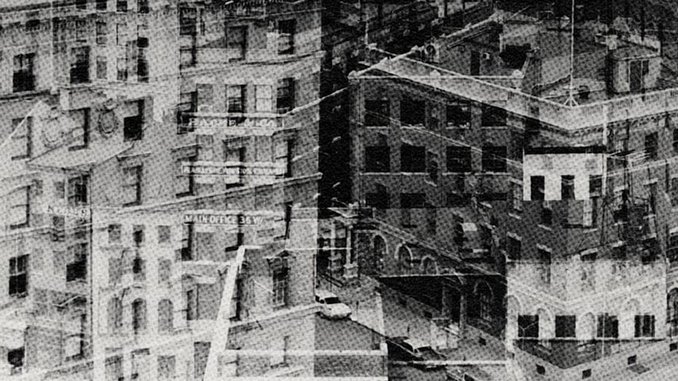
Each month, Paste brings you a look at the best new selections from the Criterion Collection. Much beloved by casual fans and cinephiles alike, Criterion has for over three decades presented special editions of important classic and contemporary films. You can explore the complete collection here.
In the meantime, because chances are you may be looking for something, anything, to discover, find all of our Criterion picks here, check out some of our favorite new releases from May, and, hey, since many of us have a lot more time on our hands, maybe sign up for Criterion’s Criterion Channel to stream many of the titles we talk about here.
Six Moral Tales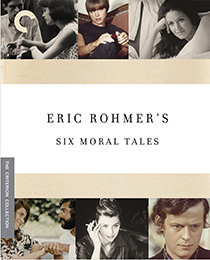 Years: 1963-1972
Years: 1963-1972
Director: Eric Rohmer
Genres: Drama, Romance, Comedy
Runtimes: from 23 to 111 minutes
Tolerances may vary for Eric Rohmer’s particularly male concerns, especially when framed so ethically. Such is the mettle of Rohmer’s “Six Moral Tales,” a series of six films chronicling the romantic dilemmas of French bourgeois men, from a student with a healthy metabolism (played by producer Barbet Schroeder, one of Rohmer’s chief creative partners) looking for some distraction amidst the superstitions of youth in The Bakery Girl of Monceau (1963) to an affluent professional, Frédéric (Bernard Verley), who daydreams in Love in the Afternoon (1972) about every girl in Rohmer’s series to escape the doubt in his own otherwise loving marriage. The “moral” nature of each film essentially means these men must—or imagine they must—choose between two (or between one and many) women: Philanderers and womanizers, absolutely, but Rohmer prefers spending time with men who seek relationships beyond sex, who are religious, as is the philosophical bachelor Jean-Louis (Jean-Louis Trintingant) of My Night at Maude’s (1969), or who look on the shenanigans of one’s fellow dudes with disgust, as does Bertrand (Phillippe Beuzen) in 16mm masterpiece Suzanne’s Career (1963).
For Rohmer’s Boys (RBs), a choice of woman is more than a consummation of physical desire, it’s a choice for a certain life—with this woman comes this future, with this other woman another distinct destiny waits, and so on, ever branching paths for these hirsute European lotharios to follow. When Frédéric fantasizes about Claire (Laurence de Monaghan) from Claire’s Knee (1970) ditching her doofus boyfriend (Gérard Falconetti) to run off with him, Frédéric is imagining countless lives he could have led were he to make countless decisions—each a moral judgment—differently, were he to not have a pregnant wife (Françoise Verley) and young daughter at home in the suburbs. (And what is “home” anyway?) Frédéric also has an amulet which renders each of these women compliant, so his fantasies hardly account for the agency, let alone the consent, of most women in his life.
A lot to stomach, a lot of toxic masculinity and heteronormativity dressed up as post-industrial, extremely European sensitivity. A lot of men who don’t treat women as objects to be collected so much as vessels through which one can access life experiences to collect instead. In 1967’s La collectionneuse (“The collector”), Adrien (Patrick Bauchau), an insufferable art dealer and ersatz professional boytoy, openly resents the young Haydée (Haydée Politoff) for “collecting” men while they share residence at a vacation house on the Riviera. In voiceover—a device the “Six Moral Tales” share—Adrien can’t disguise his insecurity, struggling to assert his dominance over Haydée and her hedonism mostly because he has no control over her. The French countryside, shot splendidly by Nestor Almendros, inspires abandon in Rohmer’s characters, and he investigates how each takes to the freedom they’re afforded—how men, especially, reveal their weakness when they’re not given what they believe they deserve.
Prototypical sexy hipster Jerôme (Jean-Claude Brialy) takes objectification to its logical conclusion by obsessing over the titular leg joint on the teenage Claire in Claire’s Knee. When he finally accomplishes the moment he’s been waiting for, Claire’s face is a well of fear and sadness and nervousness; Jerôme seems to understand, on some level, that there is an unfathomable distance between what she wants and what he wants, though he doesn’t understand what that means for his life moving forward. Or for hers. At an almost objective distance, we observe these RBs twist and worm their way out of culpability, whether they actually act on their impulses or not. By offering us intimacy with these men’s thoughts while we’re removed from the inner life of the women these men think about—left only to watch and study their every movement, complicit in objectifying them and stumbling into our own moral conundrums—Rohmer transcends the misogyny of his morality. —Dom Sinacola
The Great Escape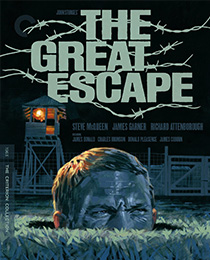 Year: 1963
Year: 1963
Director: John Sturges
Stars: Steve McQueen, James Garner, Richard Attenborough, Charles Bronson, Donald Pleasence, James Coburn
Genre: Drama, Action & Adventure
Rating: NR
Runtime: 172 minutes
World War II German prison camp escape movies were once so prevalent they created a sub-genre of their own. Billy Wilder’s more comedic than thrilling Stalag 17 inspired the sitcom Hogan’s Heroes; Aardman paid loving tribute via the underrated Chicken Run. With its masterful blend of heroic pathos and lighthearted male camaraderie, director John Sturges’ epic vision The Great Escape is certainly their king. Many will immediately think of the iconic shot of Steve McQueen’s baseball enthusiast “Cooler King” jumping his motorcycle over a border fence while escaping the Nazis. The Great Escape has its share of testosterone-driven action set pieces—this is the Western master Sturges we’re talking about—but it’s more gripping as a meticulous procedural detailing an ambitious plan to liberate 150 prisoners. The central escape scene is a study in stretching tension beyond its breaking point. We’re invested in every creak and snap; we believe that if even we make a noise, we could ruin the mission.
The film’s cast is simply spectacular, but sn extra shout-out goes to Charles Bronson as a claustrophobic tunnel digger. Bronson’s usually known as an Eastwoodian silent-but-deadly type, so seeing a more vulnerable side to his work is refreshing. Likewise, Criterion’s new HD transfer of The Great Escape looks stunning on blu-ray, with great detail on Sturges’ trademark wide shots packing in multiple narratives within the same frame. We get two lossless audio tracks, the original mono mix and a surround remix—of course go with the mono if you want the authentic experience, but Elmer Bernstein’s famous theme enveloping all corners of the room is a magical aural experience. Meanwhile, Heroes Underground is an in-depth documentary that chronicles the real escape that inspired the film; it was also provided in previous DVD editions, but if you’ve never seen it, play it immediately after the feature. —Oktay Ege Kozak
Dance, Girl, Dance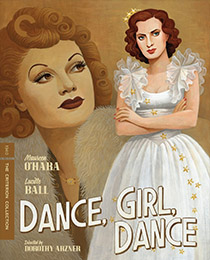 Year: 1940
Year: 1940
Director: Dorothy Arzner
Stars: Maureen O’Hara, Lucille Ball
Genre: Comedy, Drama
Rating: NR
Runtime: 90 minutes
Not many women working in 1940s Hollywood had opportunities like Dorothy Arzner did with Dance, Girl, Dance, in every sense: Women didn’t get to direct pictures all that often, and they certainly didn’t get to direct pictures about gender intersecting with power structures in male-defined industries. Arzner achieved both goals with Dance, Girl, Dance, a comedy-drama set in the world of dance and in which frenemies Judy (Maureen O’Hara) and Bubbles, a.k.a. Tiger Lily White (Lucille Ball), engage in covert competition with one another for auditions, for work and for male attention.
Bubbles is a fucking terrible friend. She gets Judy a job, sure, but a job working as her stooge, performing ballet on stage while garments are loosed from above and dropped on her head to entertain an audience full of sweaty, corpulent pigs, plus a few braying jackasses. Bubbles gets the satisfaction of humiliating her pal and also knowing that she can drive a crowd of men wild with little more than a sway of her hips and a twist of her lips. Ball is terrific here, and unsurprisingly the flashier performer compared to O’Hara. By comparison, O’Hara is more muted, but as Ball acts through her smile, O’Hara acts through her eyes, and we’re drawn in by her sympathetic projection.
The only reason these women have to go head to head with each other so ruthlessly in the first place is because dance is a biz curated by guys, who prize hubba-hubba sexuality over actual talent. Guess who has the former and who has the latter? Arzner, just like her stars, knows exactly what she’s doing here, and despite the film’s critical reassessment in the ’70s, Dance, Girl, Dance feels like a discovery even today. —Andy Crump
Husbands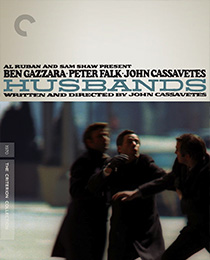 Year: 1970
Year: 1970
Director: John Cassavetes
Stars: Ben Gazzara, Peter Falk, John Cassavetes, David Rowlands
Genre: Drama, Comedy
Rating: PG-13
Runtime: 142 minutes
Men begin as boys. Generally, they find that they like being boys, so they make a concerted effort to stay boys, even when they’ve grown old enough to be married, own homes, have kids, watch their friends die. All the trappings, in other words, that make aging so damn suffocating. So what do men (who are, at heart and in action, really just boys) do when forced to stare down the barrel of their own mortality? They indulge their inner boys. John Cassavetes’ Husbands is about that painful, immature reaction to witnessing death up close, as three pals—Harry (Ben Gazzara), Archie (Peter Falk) and Gus (Cassavetes)—bid their chum Stuart (David Rowlands) their finale farewells and unravel over the course of 140-something prolonged minutes. They fly to London. They play dress-up in suits and bow ties. They gamble. They try to fuck women much younger than them. None of it goes well, nor does it go quickly. Husbands draws out its drama to the point of what feels like forever, which is the point, because the agony these men feel is the kind of agony that escalates the more time passes. The results of Cassavetes’ devotion to driving home his thesis require real effort to endure, overwhelming and teeth-grinding effort. But that’s Cassavetes: Sit through the suffering, be rewarded with authentic, honest-to-goodness (or badness, really) portraits of life in free-fall. —Andy Crump
Scorsese Shorts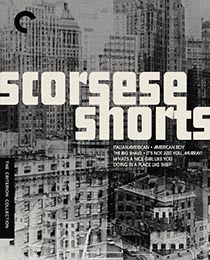 Years: 1963-1978
Years: 1963-1978
Director: Martin Scorsese
Genres: Documentary, Comedy, Drama, Experimental
Runtimes: from 5 to 50 minutes
The petty arguments of the BeforeTimes have never seemed pettier, and none more so than the one surrounding the hardly inflammatory comments made by American Saint Martin Scorsese regarding the lack of cinematic imagination at play in the Marvel Cinematic Universe. Today we know that the MCU and the American Military Industrial Complex are deeply in cahoots, having pillaged the dreamscape of moviemaking together before abandoning it completely in the wake of the pandemic and now staying silent as the country confronts the institutionalized violence against Black bodies that Marvel’s best friends have manipulated for centuries. We know too that what Martin Scorsese thinks about Marvel movies does not matter. Most likely, he doesn’t think about it much at all.
Martin Scorsese has thought a lot about gangster movies, though. More than a feather in the cap of incensed Marvel fans, Scorsese’s infatuation with the organized criminal element—from the over-energized street thuggery of Mean Streets to the eternal dark night of the soul laid out in The Irishman—has never been about glorifying that which should not be glorified. Instead, Scorsese has always used the mafia and its adjacents—the police and politicians too—as an indelibly American operation, a dynamic irreconcilable from the immigrant experience. The American Dream is accomplished only through exploitation, Scorsese intuits, and he’s spent the past five decades figuring out how to exploit that for himself.
Scorsese’s earliest short films, completed while and otherwise around the time he was a student at NYU—What’s a Nice Girl Like You Doing in a Place Like This? (1963), It’s Not Just You, Murray (1964) and The Big Shave (1967)—are the evidence of a man obsessed with film. Not only does he repurpose shots (the conclusion to It’s Not Just You, Murray an obvious homage to 8 ½, for example) but he revels in experimental fervor, the director discovering his voice through the voices of the masters, and then breaking from them, over and over. The Big Shave is funny and uncomfortable, amateurish but assured, a morbid cry against the Vietnam War as much as a vague symbol of—what? The horror of domesticity? Similarly, It’s Not Just You, Murray, a slapstick-y first-person account of one dumb guy’s meteoric rise from bootlegger to made man, reflects startling storytelling acumen and economy for such a new filmmaker, though what Scorsese seems to be criticizing about the gangster movies and musicals of his youth—these romanticized antiheroes of yore—is somewhat lost in Scorsese’s grappling with tone.
Scorsese’s first documentary, 1974’s Italianamerican, embraces the cinema verite of the Maysles and Pennebaker—undoubtedly incredibly influential on the young urban director—as much as the self-reflexive nature of Simbiopsychotaxiplasm: Take One, laying the artifice of his arrangement bare to lure his subjects into revealing unintended, deeper truths. In this case, his subjects are his parents, second-generation Sicilian immigrants and lifelong New Yorkers, ready to regale their son’s small crew, crammed into their Queens apartment, with their life stories and impress them with his mother’s sauce (the recipe to which is provided in the film’s closing credits scrawl). Rather than cut around his parent’s awkwardness, Scorsese frames scenes inside the mechanisms of their capture: His mother, from the beginning, asks if she’s doing what she should be doing, wondering why her son wants this question or this anecdote in the movie, what with it being so uninteresting. Meanwhile, Scorsese’s dad Charles chastises his wife for posturing for the camera, imploring her to talk like she normally would. To talk like she would to him. Amidst old photos and shots of the teeming streets outside his parents’ apartment, among plastic-enshrined furniture and painted murals of the old country, Scorsese allows his parents to wander through their stories and memories, to find a way back to who they were in order to figure out who they are, bringing the two sides of themselves together until they’re one long word, a big and bountiful mess of vowels.
Seemingly less in control is American Boy (1978, the same year Scorsese releases seminal The Last Waltz), a “Profile of Steven Prince” told through one long conversation. A familiar face for a small part in Taxi Driver, Prince developed a reputation throughout Hollywood, so much so that one of the stories he recounts in this documentary was synthesized into a scene in Pulp Fiction, another retold in Waking Life. Tarantino and Linklater—two inexorably American movie directors pulling from the freewheeling life of an ex-addict, a tour manager for Neil Diamond, a guy who introduces himself in Scorsese’s movie by wrestling with a friend long past the point of anyone having any fun, their scuffle knocking over everything in this living room lasting just as long as the legendary fight in They Live. As with his parents, Scorsese sits close by, thumbing through a packet of notes but mostly letting the subject ramble on, directing the flow of the film. Prince’s stories coincide with home videos and old pictures, Prince’s voice our narrator and guide as the humor and warmth of his stories wear themselves out. Hilarious and exhausting, American Boy is as much a celebration of a life as it is an indictment of that life’s indulgence, each of Prince’s stories a chronicle of American privilege enduring through American pain. —Dom Sinacola